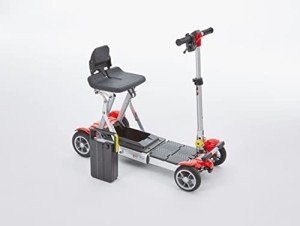Understanding Mobility Aids: Enhancing Independence and Quality of Life
As society continues to age and people significantly seek ways to maintain independence, the demand for mobility aids has actually never been more important. Mobility aids, which include a variety of devices created to help people with strolling or walking around, play an essential role in promoting mobility, boosting safety, and improving general lifestyle. our website will explore the numerous kinds of mobility aids, their benefits, considerations for choice, and respond to some frequently asked questions.
Kinds Of Mobility Aids
Various mobility aids are available, each designed to deal with specific needs. The following table summarizes a few of the most typical kinds of mobility aids and their functions.
| Kind Of Mobility Aid | Description | Best Suited For | Key Features |
|---|---|---|---|
| Walking sticks | A portable stick offering support and balance. | Individuals who need minimal support. | Light-weight, portable, adjustable height. |
| Walkers | Four-legged frames supplying stability. | Those needing considerable support while walking. | Foldable, some with wheels, included security features. |
| Rollators | Wheeled walkers with a seat for resting. | Individuals requiring mobility with the choice to rest. | Brakes, baskets for personal products, adjustable height. |
| Wheelchairs | Chairs with wheels for people with limited mobility. | Those unable to stroll or requiring substantial support. | Manual or powered options, customizable seating. |
| Scooters | Motorized devices for larger ranges. | Individuals with limited stamina however needing independence. | Various sizes and designs, often portable. |
| Crutches | Support devices positioned under the arms or lower arms. | People recuperating from lower limb injuries. | Adjustable, lightweight, needs upper body strength. |
| Stairlifts | Mechanical devices for moving between floorings. | Users facing difficulties in multi-level homes. | Customizable for different staircases, automated. |
Advantages of Mobility Aids
Mobility aids offer a variety of benefits that can significantly enhance the lives of people dealing with mobility difficulties. Some noteworthy benefits include:
- Increased Independence: Mobility aids empower individuals to move easily without relying on others for help, consequently improving their confidence and self-esteem.
- Boosted Safety: Using mobility aids can reduce the threat of falls and injuries, specifically for older adults or those with balance concerns.
- Improved Quality of Life: By helping with mobility, individuals can engage in social activities, go to occasions, and delight in life more totally, adding to better psychological and psychological health.
- Rehabilitation Support: After surgery or injury, mobility aids provide needed support and stability, aiding in recovery and rehabilitation processes.
- Ease of access: Many mobility aids are developed to be used both indoors and outdoors, making sure that individuals can browse different environments with ease.
Aspects to Consider When Choosing Mobility Aids
Choosing the proper mobility aid needs mindful factor to consider of several aspects, consisting of:
| Factor | Factors to consider |
|---|---|
| User's Needs | Assess the level of mobility needed; think about whether the user needs short-lived or long-lasting assistance. |
| Physical Limitations | Evaluate the user's strength, balance, and coordination to determine the very best kind of help. |
| Setting | Think about the main environments where the aid will be used, such as home, outdoors, or particular surfaces. |
| Weight and Portability | Ensure that the selected gadget is manageable concerning transportability and storage, specifically for outdoor use. |
| Budget plan | Mobility aids can be found in a range of costs; think about insurance coverage and readily available funding alternatives. |
| Adjustability | Select aids that can be changed for height and comfort to accommodate development or altering requirements. |
Often Asked Questions About Mobility Aids
1. How do I understand if I need a mobility help?
Numerous aspects can signal the need for a mobility aid, such as trouble strolling or stabilizing, tiredness while standing, or a recent surgical treatment impacting mobility. Consulting with a health care expert can supply assistance customized to specific needs.
2. What kinds of mobility aids are covered by insurance?
Protection differs in between insurance providers, however the majority of provide alternatives for durable medical equipment, which generally includes wheelchairs, walkers, and some types of canes. Talk to your insurance company for specific coverage info.
3. Can mobility aids be used outdoors?
Yes, lots of contemporary mobility aids are designed for outside use. Rollators, scooters, and some walkers are geared up with features for stability and ease of usage on different terrain.
4. How do I keep my mobility help?
Routine maintenance involves looking for any wear and tear, guaranteeing that parts such as wheels, brakes, and frames are operating properly, and cleaning the devices as needed. Following the producer's standards is essential for security.
5. Exists a threat of becoming dependent on mobility aids?
While some users may end up being reliant on mobility aids, they are designed to promote independence and mobility. Slowly utilizing a mobility help can boost self-confidence and assistance retain physical strength and coordination.
Mobility aids are indispensable tools that empower individuals to get rid of physical challenges, promoting self-reliance and improving lifestyle. By comprehending the different kinds of mobility aids offered, their benefits, and important factors for consideration, families and caretakers can make informed choices that best satisfy the needs of their enjoyed ones. With the best support, those with mobility obstacles can lead satisfying and active lives, free to explore the world around them.

